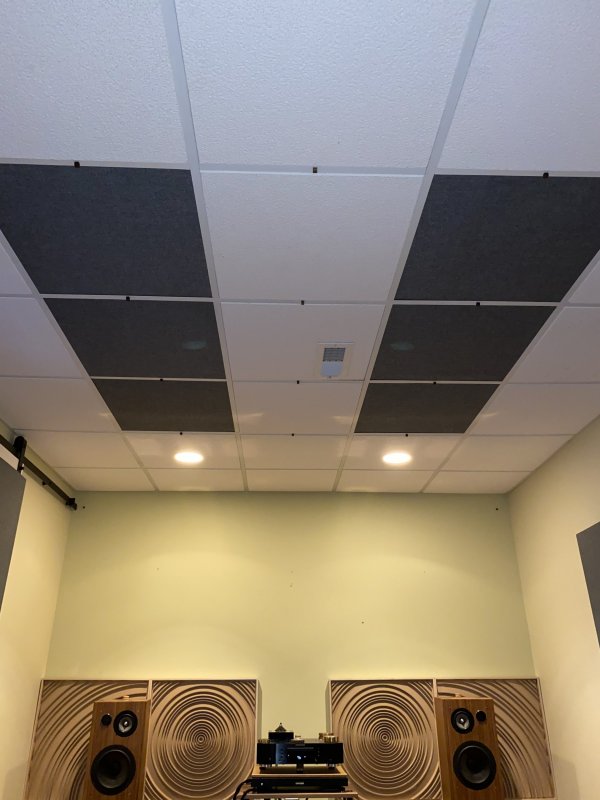I have 4 systems, and I like to play around in this hobby. My biggest room is 17 x 25 feet, but opens to other different rooms, helping bass escape.... Other rooms are 14 x 16, 10 x12, etc., but have to be closed not to disturb...
Of all of the room treatment companies I've dealt with, I found one that really does a great job in recommending what treatment to use, where to place it and they can give you a strategy in terms of getting what will give you the best bang for the buck and what to buy later when you have more money. If you are experienced carpenter with a table saw and time on your hands, they also sell build plans for their products so all you have to do is buy the fill material for their low frequency absorption cabinets because they have patents on it and they mfg. their own fill material. And their acoustic foam since it's also proprietary, but hands down, they have the best stuff I've run across. I've never been in a better sounding room than what they do. They actually got the room to have no sound and it was so natural, not over absorbed at all.
But if you are going the DIY route to save money, you do need some experience in using a table saw, but their instructions are very clear and they can advise you on what you need to build and where to place the units. OR, you can actually build your own rooms as they have low frequency absorption that they build within the actual wall structure so you don't have to have lots of boxes around the room.
They do factor in things like number of bass drivers, size of the bass driver, how loud you listen to music or movies as that will also depend on how much low frequency absorption you'll need. But typically for absorption, the front wall is the most important and the side walls. Diffusion does open up the sound stage. As far as modal pressures are concerned, it all depends on the room dimensions and volume will dictate where the model pressure zones are and it depends on how big of a peak you are trying to manage and how flat you want your room's reponse curve..
Their units are big, heavy, and expensive, but they do have the most effective products I've seen. with regards to low frequencies, especially in the 30hz to 50 hz range, which are always the hardest to deal with. I spent many months searching all of the companies that sell "bass traps" and found they had the best on the market for 30hz to 50hz.
The company is Acoustic Fields. They have lots of videos that provide a wealth of information and they do guarantee their products so if you buy their products and you don't like it, they will refund your money, but I highly doubt you will be disappointed….
so, by all means, fill out and submit their room form and talk to them for an hour. You can always call other companies to get their suggestions and go with who you feel the most comfortable with.. But I would stay away from Auralex, I bought product from them and was disappointed with what they sell. Also, you have to be very careful as to what companies call a. "Bass Trap". many companies sell what are heavily misleading products that do NOT do well in the low frequencies in the 30hz to 50hz range, which are the hardest to deal with.
The thing that impressed me the most about Acoustic Fields is they do a lot more with regards to finding out what your usage is, and other factors that will impact what treatment you'll need. Generally speaking, for 2 channel listening, you don't necessarily want it to be treated the same as a control room in a studio or a home theater application. Different usages require different types of treatment.
And no, I don't work for them, I just love their products and their recommendations.
best of luck to you..


